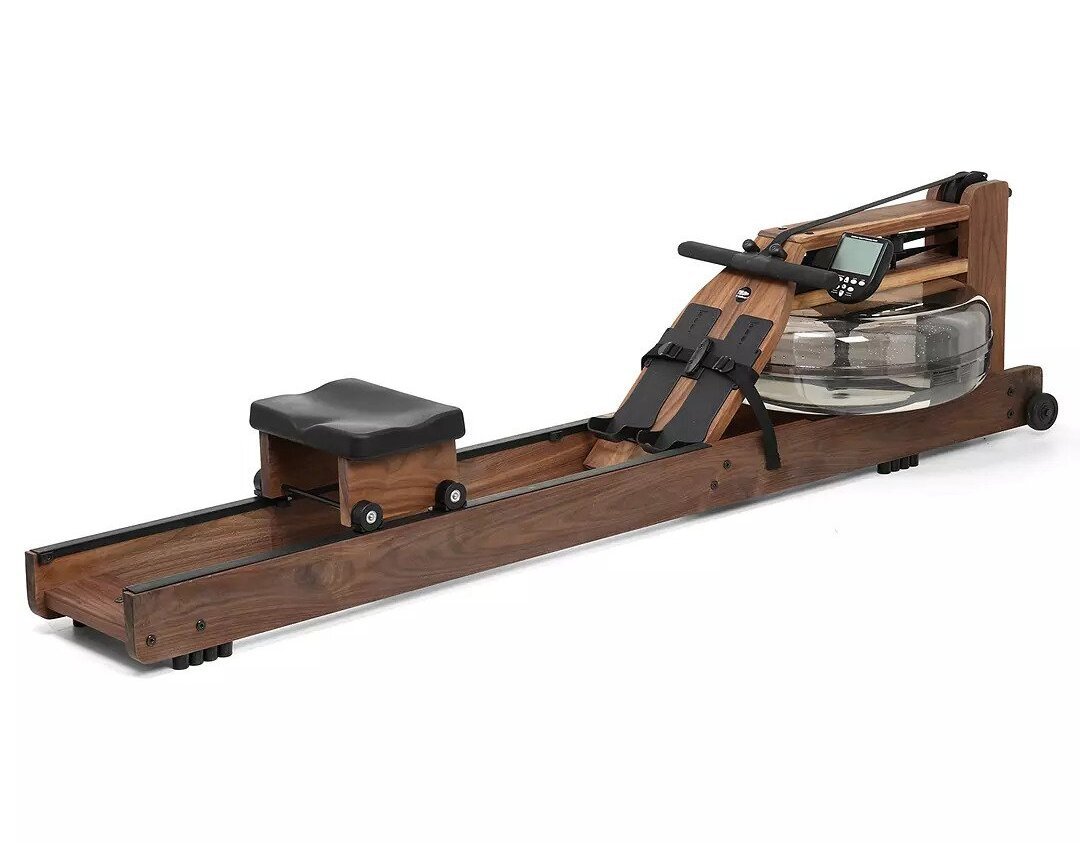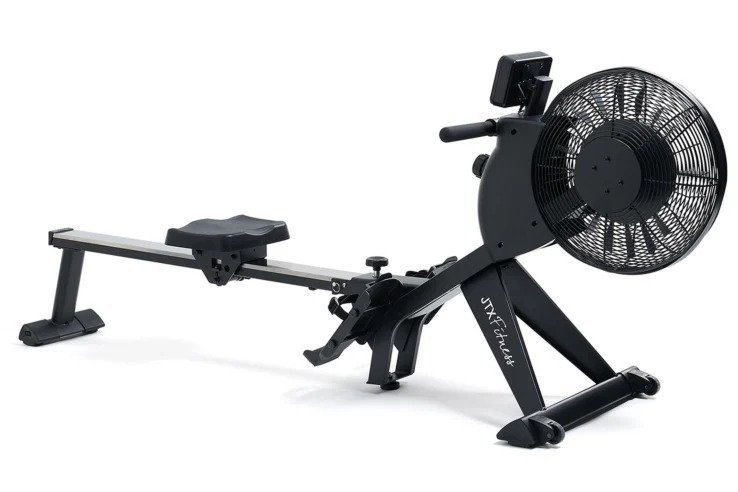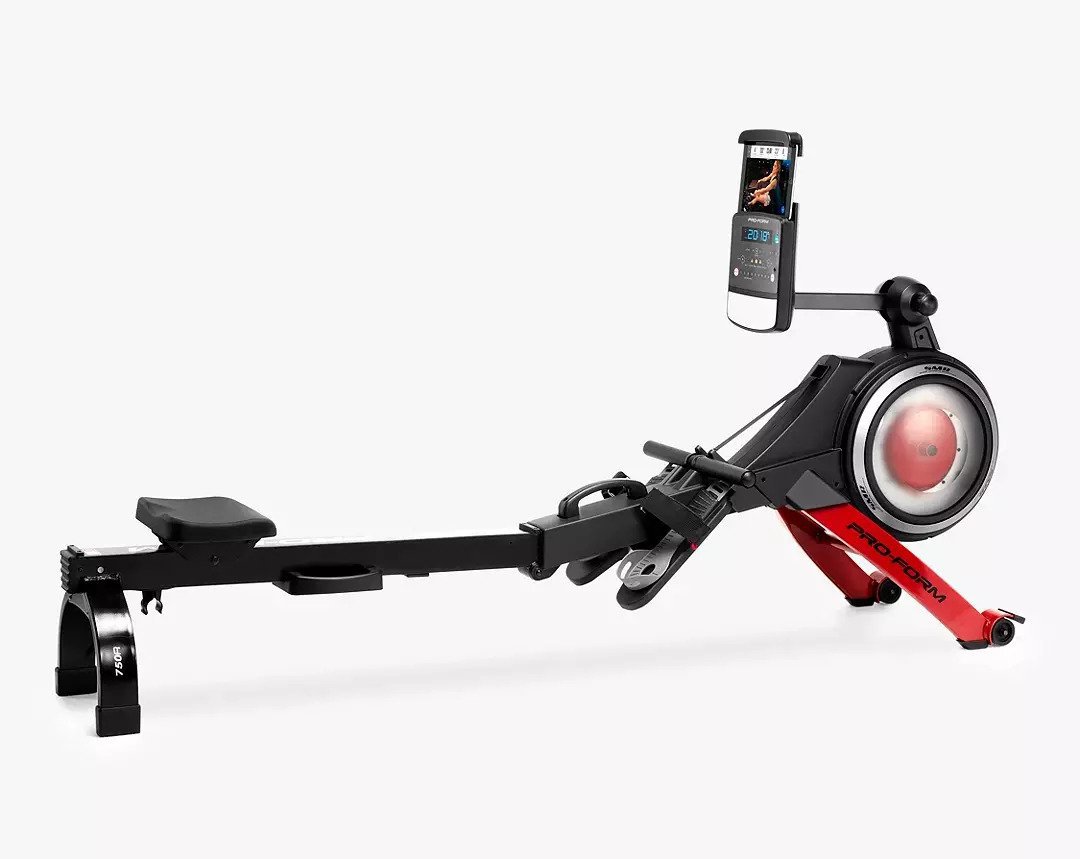Rowing is an increasingly popular form of exercise that is gaining traction for its health benefits. If you’re interested in purchasing a rowing machine, it can be confusing to decide which one is the best for you. In this blog post, we’ll be covering the differences and similarities between water, air, and magnetic rowers, as well as which indoor rower is the best for you based on several factors.
The differences between water, air, and magnetic rowing machines span across their feel, resistance mechanisms, design, and cost. Water rowers give you the most realistic rowing experience, air rowers provide you with a challenging workout, and magnetic rowers are the quietest.
What is a water rower?
Water rowers seem the most intuitive when deciding which rowing machine is best for you. After all, most people interested in them are probably training for the real thing, rowing in a large body of water. So, what better way to do this than to bring the water to you, no matter where you are?
A water rower is a type of rowing machine that utilises water to create resistance and mimic the feel of rowing on actual water. It is composed of a seat, handles, footrests, a water tank, paddles, and a chain. The drum of water sits under the footrests, at the front of the machine. As you pull on the handles, the paddles move in the water tank, pushing water and creating the resistance or weight to make rowing harder. We've pulled together a list of the best water rowers on the market.
What is an air rowing machine?
In most modern-day gyms, you’ll probably see (and hear) at least one air rowing machine as a part of its repertoire of workout contraptions. This is one of the most popular rowing machines used today. And, you’ve probably guessed correctly, an air rowing machine uses air to create resistance and make you feel as if you’re rowing through water.
Also known as ergs, air rowing machines cleverly create resistance by using an internal flywheel connected to a chain and rowing handle. As you pull, the flywheel spins, making the drag that weighs upon every pull. Like water rowers, an air rowing machine also comes equipped with a seat and footrests.
What is a magnetic resistance rowing machine?
Popular like the air rowing machine, magnetic rowing machines are quickly becoming a rowing alternative for those most focused on rowing at home. Although it may not mimic the feel of rowing on water, it will still give you a tough workout to beat.
A magnetic resistance rowing machine is the modern approach to the sport, using a strong magnet to create resistance. The device can control how much resistance is created by varying the magnet’s distance from the spinning flywheel. This magnetic mechanism differs from water and air, for it is constant throughout the pull, no matter how fast or slow you row. If you want a magnetic rower, you should check out our post on the best magnetic rowers.
Buying Guide
Now that you know a bit more about each type of rowing machine on offer, we'll run through the key factors to consider when working out which one is right for you. We've also put together a handy summary table with the pros and cons of each:
Stroke feel
Stroke feel varies between water, air, and magnetic indoor rowing machines.
Water rowing machines have the most natural stroke feel. Like in real life rowing, with a water rowing machine, you paddle through water in order to move it. While you’re not going anywhere on the machine, you are moving the water in the water tank and creating the feeling of travelling through the water.
Air rowing machines greatly mimic rowing on water and are known for their smooth strokes. The air easily glides through the flywheel and creates the seamless rowing experience, much like a water rower. In terms of waterless machines, the air rowing machine is your best bet for a water-like experience.
While very effective at creating resistance, the magnets of a magnetic rowing machine do not mimic the feeling of rowing through water. When you row on water and air rowing machines, the faster you row, the more resistance is created. The magnetic rowing machine doesn’t have this ability, and the stroke remains constant no matter how fast or slow you row.
Resistance and workout intensity
Each of the rowing machines can change their resistance and offer you workouts of varying intensity.
On a water rowing machine, resistance is determined by increasing or decreasing the water in the water tank. The more water there is in the drum, the harder it will be to row. Additionally, if you row faster, then the resistance will increase as well. If you want a lower intensity, then remove some water and row slower.
On an air rowing machine, resistance is determined by how fast you row and the damper settings. These settings determine how much air is allowed to enter the flywheel housing. The higher the settings, the more air that enters and the harder it is to row. For an easier rowing session, you can lower the damper settings and row slower. Damper settings are controlled manually or through a monitor.
On a magnetic rowing machine, resistance levels depend on how close the magnets are to the metal flywheel. If the magnet is closer, then it is harder to row. You can change this resistance setting manually with a dial or through the monitor.
Which rower is best for home use?
For use at home, you’ll need to take into account how much noise the rowing machine makes as well as how much space it takes up. An indoor rower will take up space, no matter what. But, there are sizing differences between each of them.
In terms of noise levels, the air rowing machine is by far the loudest. The water rowing machine is relatively quiet, although you will hear the water sloshing in the tank. A magnetic rowing machine is the quietest, with little to no noise at all as you row. Additionally, you should take into account where you are going to place the machine. Wooden flooring tends to cause more vibrations and noise, while carpet or mat dampens the noise.
Water rowing machines tend to be larger than air and magnetic rowing machines. Magnetic rowing machines are the most compact and are generally lightweight as well.
So, if you want a rowing machine that is small and quiet, then the magnetic rowing machine is the way to go.
Cool technology and features
Rowing machines can be bare-boned and simple or modern and technologically advanced.
Water rowing machines tend to be on the simpler side from a tech perspective, mainly including a metrics display. But, this display can often be inaccurate, so you’ll have to take whatever it reads with a pinch of salt.
Air rowing machines and magnetic rowing machines are often much more advanced, equipped with a built-in screen, tablet holder, pre-programmed workouts, and more!
There are even “smart” interconnected rowers that can provide you with an immersive exercise experience, such as the Echelon Rower and the NordicTrack RW900.
Aesthetic
The water rower is often made of wood, harnessing a fashionable, timeless aesthetic that will complement any household.
The air rower and magnetic rowers look more sleek and modern, often black or silver.
Nowadays, there are many different styles and materials you can choose from.
Durability and Maintenance
In general, rowing machines do not require a lot of maintenance. If you decide on a water rowing machine, then every once in a while, you’ll have to change the water, but that’s it! Most rowers will last you a long time if taken care of properly.
Some preventative and care measures used to keep your rowing machine in tip-top shape are wiping down the machine after use, placing the machine on top of a mat, and periodically checking that all bolts and screws are correctly tightened.
Price
Rowing machines are relatively cheaper compared to other workout machines. For top-notch rowing machines, you’ll rarely have to dish out more than £1,000 ($1,400).
Water rowing machines are the most expensive, and lower-tier water rowers can be found for as low as £350 ($500).
Air rowing machines can be found for as low as about £215 ($300).
Magnetic rowing machines are the most affordable, with lower-tier rowers as low as £110 ($150).
For those of you who are price conscious, we've pulled together a list of the best affordable rowing machines.
Conclusion: what type of rowing machine is best for you?
All in all, if you want the most realistic and classic rowing experience then you should go for the water rower. If you don’t mind the loud noise and are serious about rowing as a sport, you should pursue the air rower. And lastly, if you’re looking for the perfect at-home rower that’s smaller and quiet, then the magnetic rower is for you.
For more help with your rowing machine purchase, check out our ultimate guide to buying a rower.
For the rest of your man cave needs and desires, why not explore our site or head over to the Rowing Machines section to see more posts and recommended products!
Affiliate disclaimer: on some or all of the products referenced in this article, we receive a small commission if you make a purchase via our site. This does not impact the price you pay, but it allows us to keep helping people by writing these reviews, so thank you!





